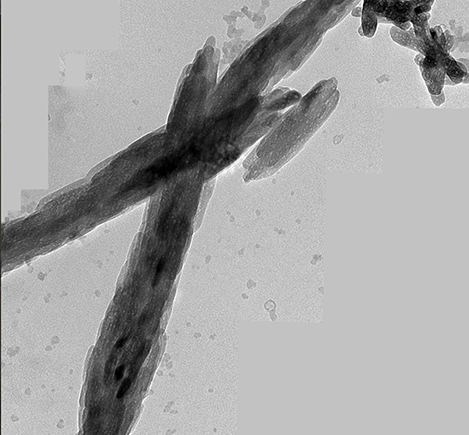07.04.2016: Gypsum is a ubiquitous mineral on the Earth’s surface with great importance for the building materials industry. New insights into the formation process of this mineral may help to increase energy efficiency of the use of gypsum as construction material as well as provide new insights into hydrologic conditions on other planets. This is shown by a study of an international team of scientists with participation of the GFZ and the University of Leeds, published in the scientific journal Nature Communications.
The formation process was so far not understood in detail - for a long time it was considered as a simple, single-step process. In a study published by a team of researchers led by Dr. Tomasz Stawski, University of Leeds and GFZ it was now shown that the process is composed of four steps and is much more complex than thought earlier.
The first steps are crucial
For this study the scientists used high-resolution synchrotron-based X-ray scattering. They were able to most exactly identify and quantify the formation steps of the mineral. It was shown that earliest stages of the process are of particular importance. They determine the final properties of gypsum. A better understanding of this process can also help to make the usage of gypsum as construction material more energy- and cost-efficiently. Plaster of Paris is for example normally produced by the energy-intensive heating of gypsum.
“We envisage that it is possible to alter this pathway by specifically targeting individual stages. For example we could arrest the reaction at the first stage when only nano-bricks are formed, and thus directly synthesise a highly reactive precursor toPlaster of Paris”, says Dr. Tomasz Stawski, main author of the study.
Gypsum on Mars
The new findings may potentially be applied for investigation of other planets, since gypsum is formed in aqueous solutions. Professor Liane G. Benning, co-author of the study: “We know that gypsum is naturally found on Mars, so applying our current finding will also help us understand and predict the hydrological conditions at the time of gypsum formation on other planets”. (ak)









![[Translate to English:] Torsten Sachs in front of a climate station on a field](/fileadmin/_processed_/3/9/csm__TorstenSachs_bearbeitet_GS_4a1365ef84.jpeg)

![[Translate to English:] left image flood at the Ahrtal: image from above, several houses are flooded; left image:: Heidi Kreibich;](/fileadmin/_processed_/4/4/csm_Bild2_9af0130e9f.png)



![[Translate to English:] Start der Vega Rakete](/fileadmin/_processed_/6/4/csm_20231201-kachel_Vega-VV23-launch_ESA-CNES-Arianespace_706716b68c.jpeg)









![[Translate to English:] Poster exhibition at the Brandenburg Hydrogen Day at the GFZ, some participants in the foreground](/fileadmin/_processed_/6/5/csm_Erster_Brandenburgischer_Wasserstofftag_GFZ_402fcec95e.jpeg)
![[Translate to English:] Group picture of the participants](/fileadmin/_processed_/9/4/csm_20231108_CAWa-Workshop-Tashkent_Gruppenbild_99ea779d8a.jpeg)

![[Translate to English:] [Translate to English:] Hörsaal](/fileadmin/_processed_/e/6/csm_H%C3%B6rsal_e21ac645fb.jpeg)


![[Translate to English:] The Delegations in the Historic Library on the Telegrafenberg. In the back there are from left to right, the Dutch Ambassador for Germany, Ronald van Roeden, the Dutch Minister for Education, Culture and Science, Robbert Dijkgraaf and the scientific director of the GFZ, Susanne Buiter.](/fileadmin/_processed_/d/b/csm_Kachel-2_9eba4b4212.jpeg)

